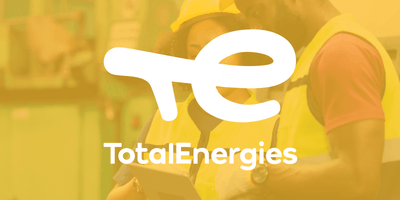Creating operational excellence begins with establishing standard operating procedures. The next step is to digitalize SOP.
What is SOP?
SOP means “standard operating procedure,” which is a written document that details the step-by-step instructions and best practices to correctly complete an organizational task. Think of SOPs as formal instructional guides that your company creates to help you complete a task the best way.

Standard operating procedures help organizations:
- Formally document operations in a detailed manner
- Systematize and standardize processes
- Remain compliant with organizational, industry, and government regulations
- Clearly define the responsibilities of each role for better better distribution of time and tasks
- Create a more productive work environment
- Foster an employee mindset around continuously improving
Why Digitalize SOP?
To digitalize SOPs does not mean to simply change from a paper medium to an electronic one. Digitalizing SOPs means to truly optimize an organization’s procedures and operations.
Digitalizing SOPs allows organizations to:
- Map business processes
- Eliminate paper
- Secure data through controlled access
- Centralize information and make it accessible to everyone who needs it
- Easily update work processes and instructions
- Avoid misinterpretation and provide clarity
- Achieve greater versatility and team agility
- Increase autonomy of both employees and management
- Rapidly onboard and integrate new employees and managers

Steps to Digitalize SOP and Work Instructions with videos
1. Begin with basic onboarding procedures that everyone needs to know
The first SOPs you digitalize should be the most basic procedures… think software onboarding, tours, team member introductions, and more. These videos will be seen by everyone in the organization, and will therefore save enormous amounts of time and energy normally spent on in-person training.
2. Ask one person from each department to volunteer to be a content creator
Initially you can ask for volunteers for content creator positions - some may be more inclined than others to record themselves and share it across the org. Let these leaders take the wheel, and appoint people in departments where there are volunteer gaps. Task them with creating basic tutorials and how-to videos for the entire organization to see.
3. Have content creators review each other’s work
Before sharing with the entire organization, content creators will want feedback from each other first. Do this respectfully and constructively.
Together, you can make sure that each video contains the following components:
- Clear subject.
- Clear objectives.
- What skills are going to be taught?
- What is the plan for teaching these skills?
- Is your audio quality high?
- Have fun!
4. Train all employees to use video knowledge sharing tool
Once the initial trainings to be shared have been created, begin familiarizing all employees with your company’s video knowledge capture platform. Hold live trainings and subsequent virtual ones, and ensure that adequate support is readily available at all times during the transition. Make sure your employees feel supported and empowered to use the new tool you are presenting to be used to capture and share subject matter expertise.
5. Share initial training materials with entire organization
Once the first training videos have been created and your workforce is trained to use the new knowledge sharing platform, you are ready to share your first content! Remember, these video tutorials will be for everyone in the organization and will cover very basic processes. These videos will be the first thing your new employees see when they begin onboarding with your organization.

6. Snowball Effect: Watch as other employees become empowered to share their own knowledge
After your initial launch, be prepared to watch other employees become empowered to share their own knowledge. So much of the time we simply require some social proof that something works, and is doable for us and people like us. Once everyone sees what these initial, volunteer content creators are capable of they will be ready to create content themselves.
7. Effectively communicate paths to success and failure
Make sure your viewers know when they have completed a certain task. Make it crystal clear what is required, whether that be a single training, a series of trainings, a quiz score, a time limit, or something else.
Conclusion
Once SOPs are created your next step is to digitalize them. When your organization digitalizes SOPs you streamline and empower knowledge sharing, reduce errors, increase efficiency and autonomy, and more. Digitalize SOPs today in your organization with the right tool for you.
Want to digitize SOPs in your organization? Get started today at speach.me!





